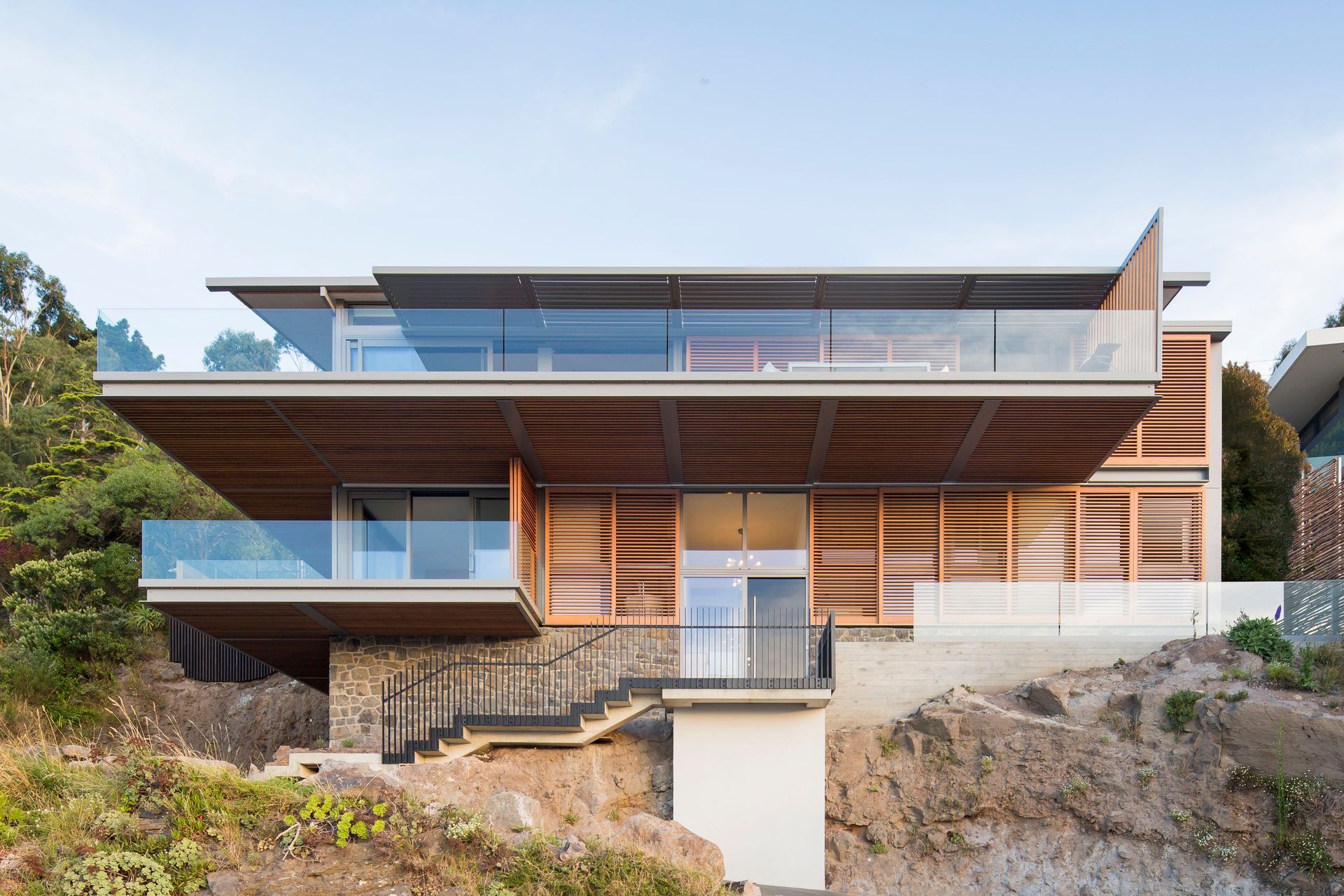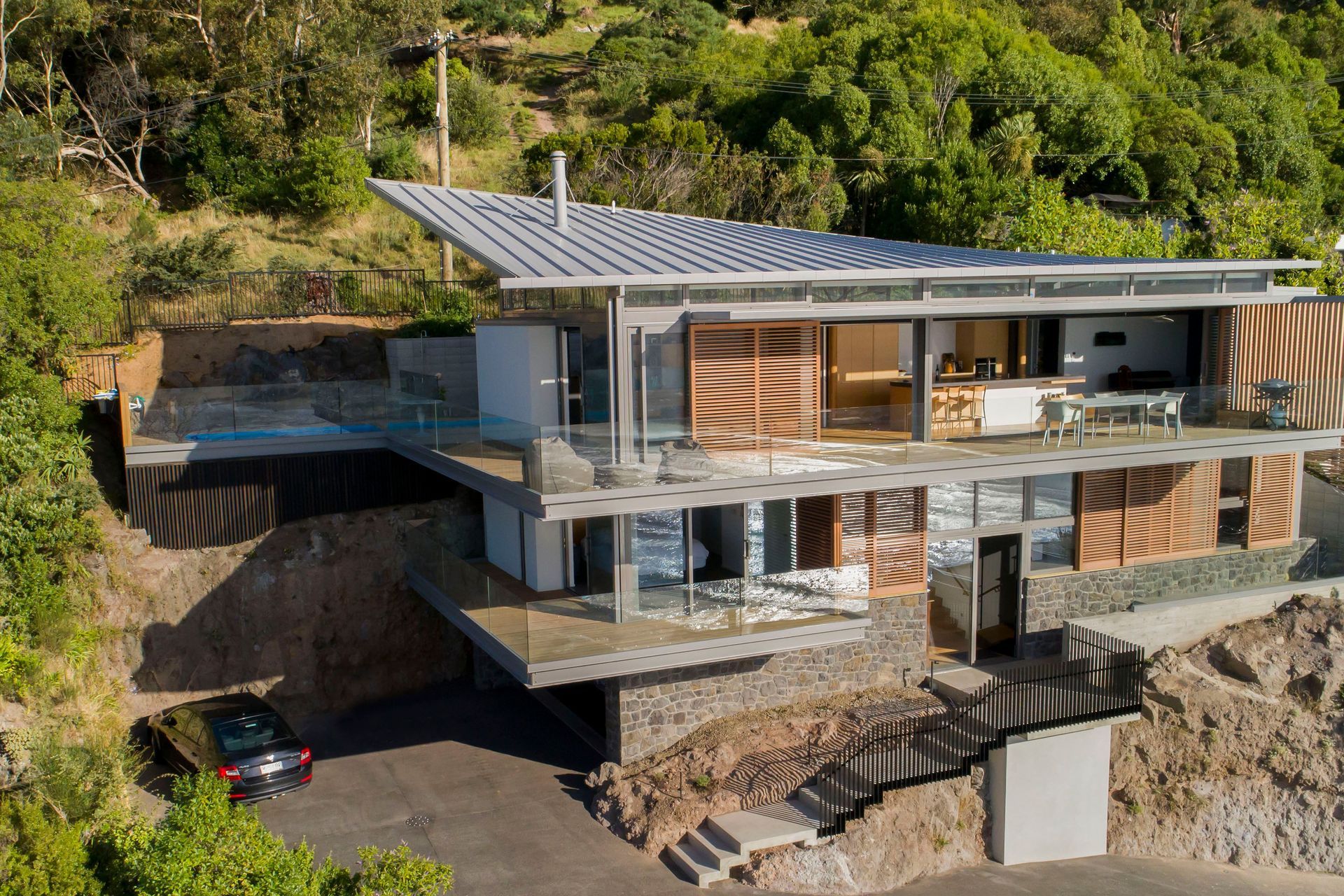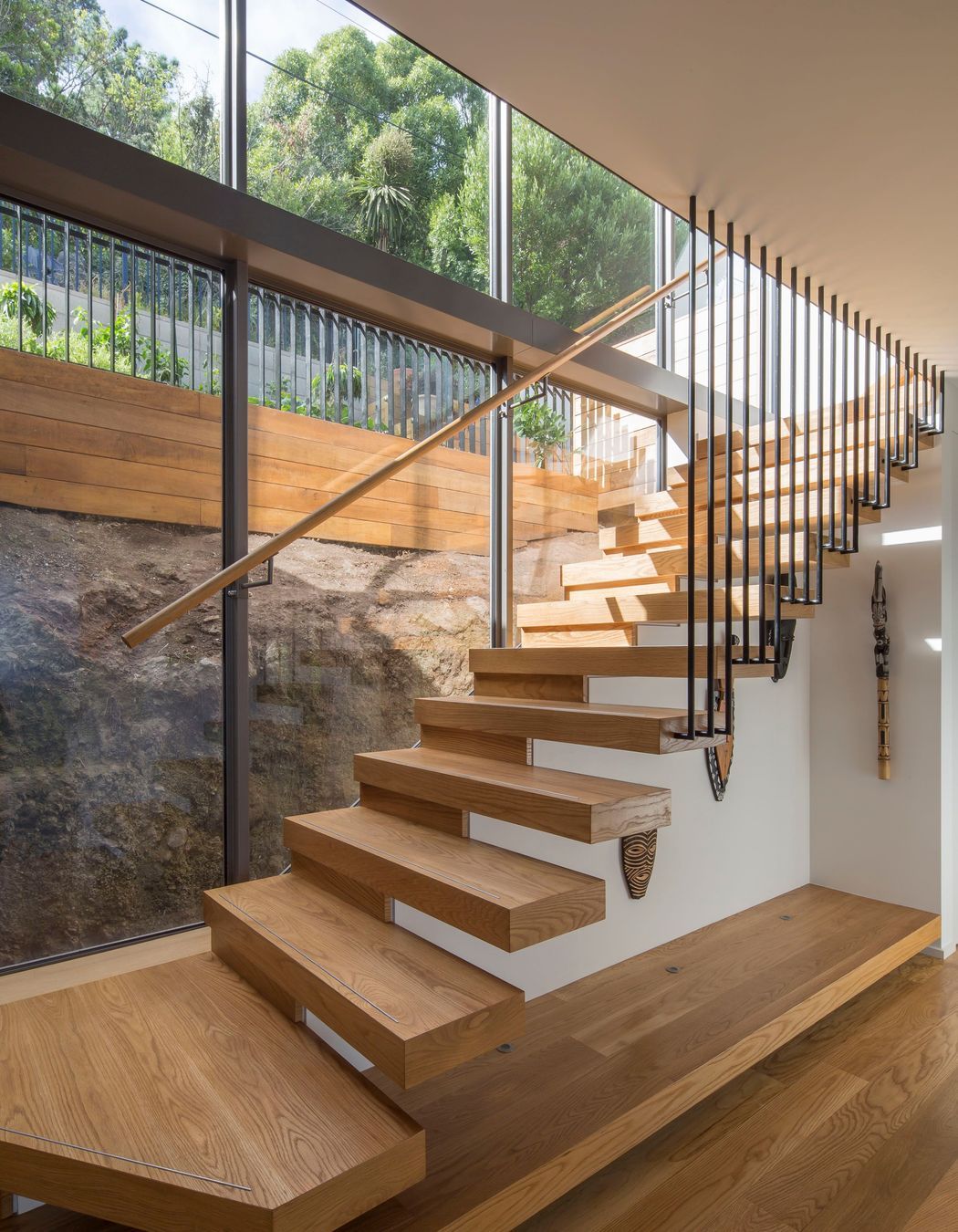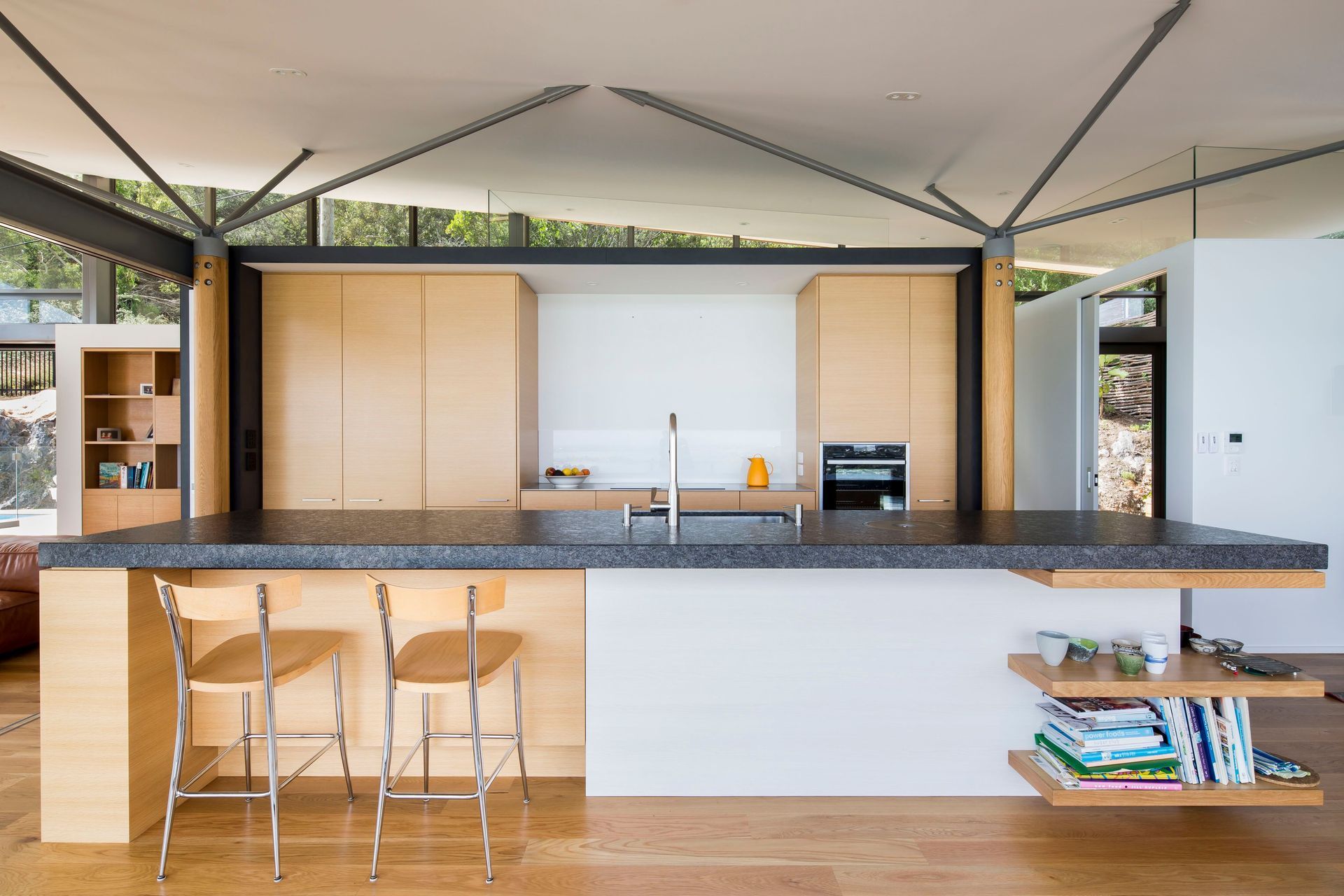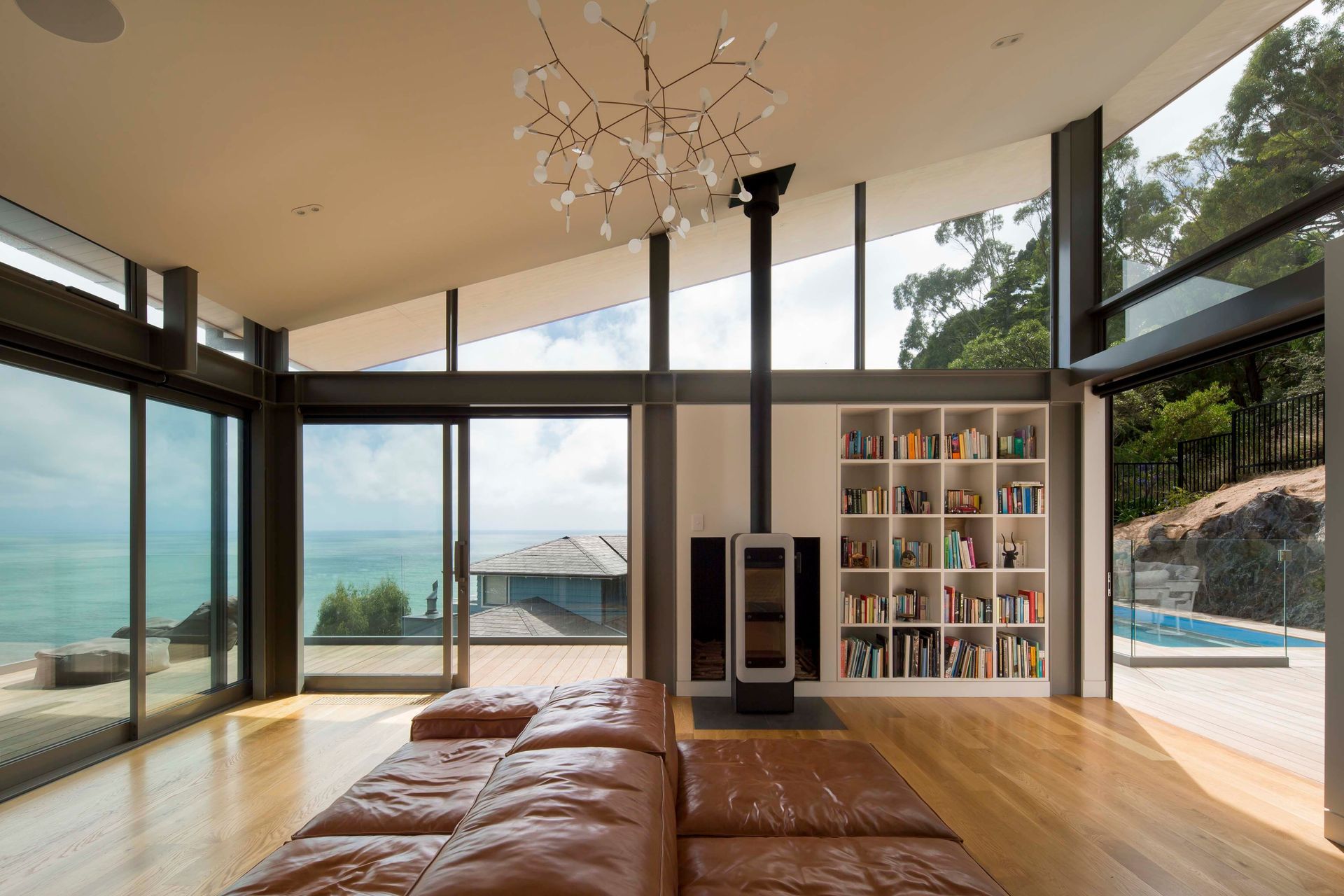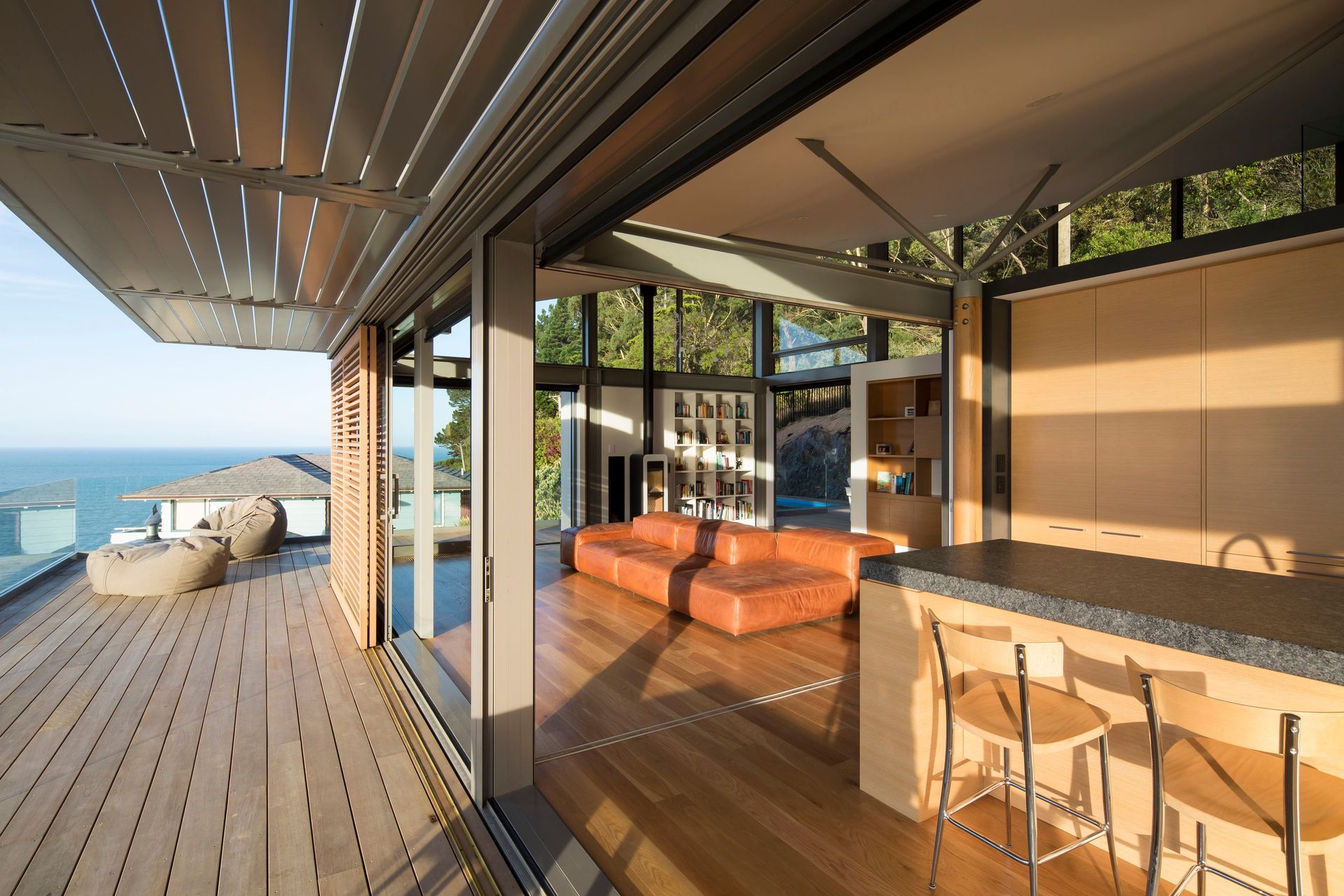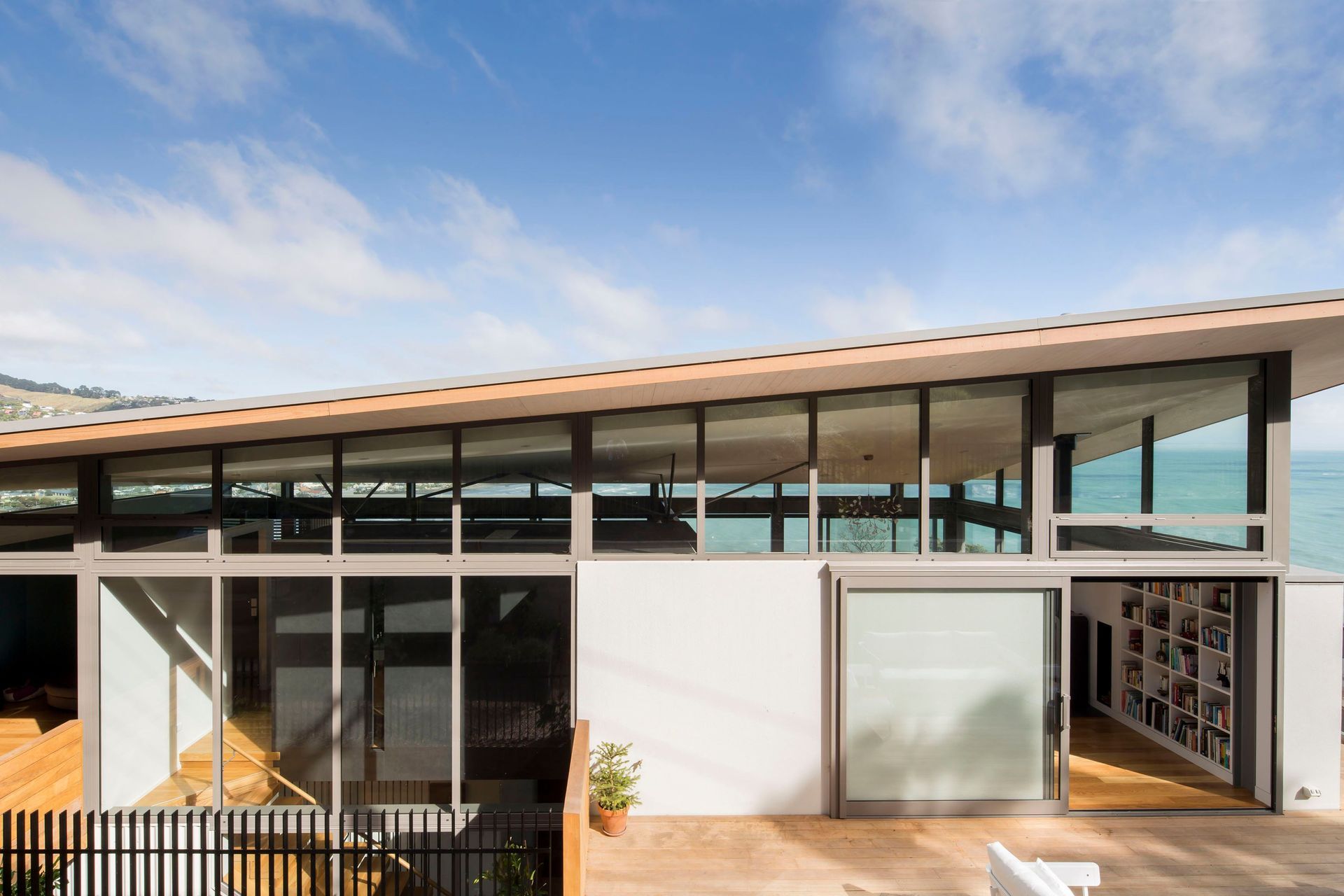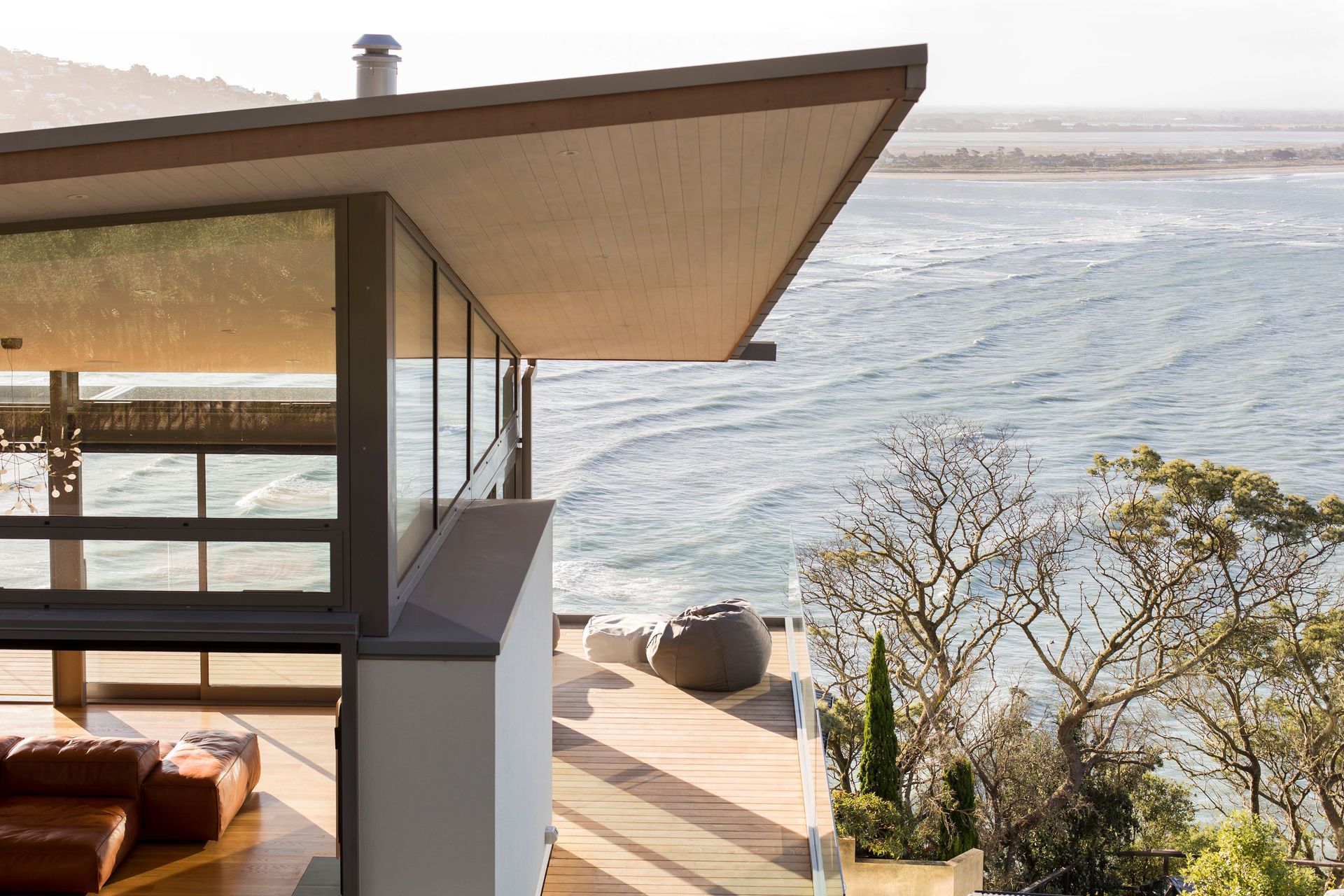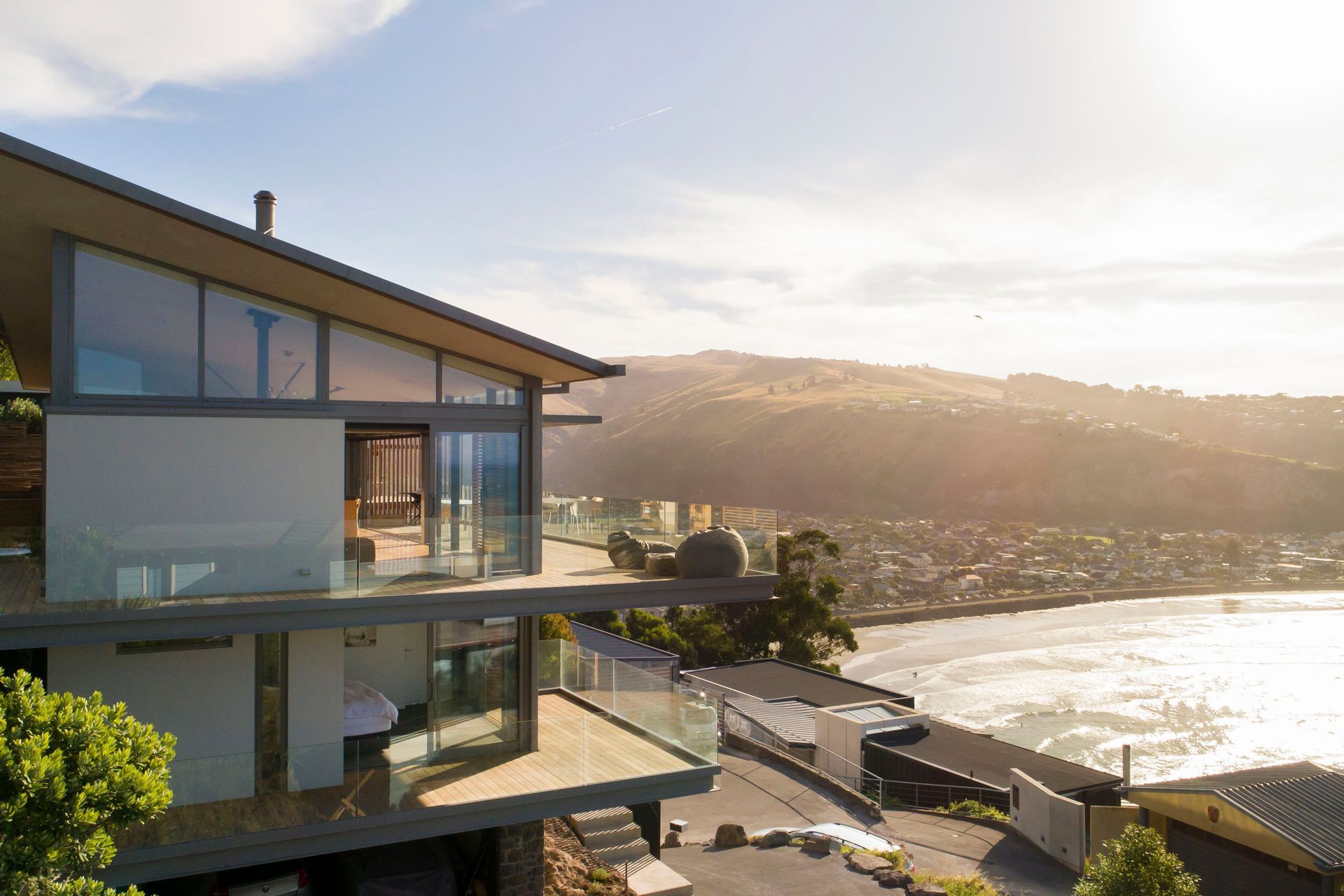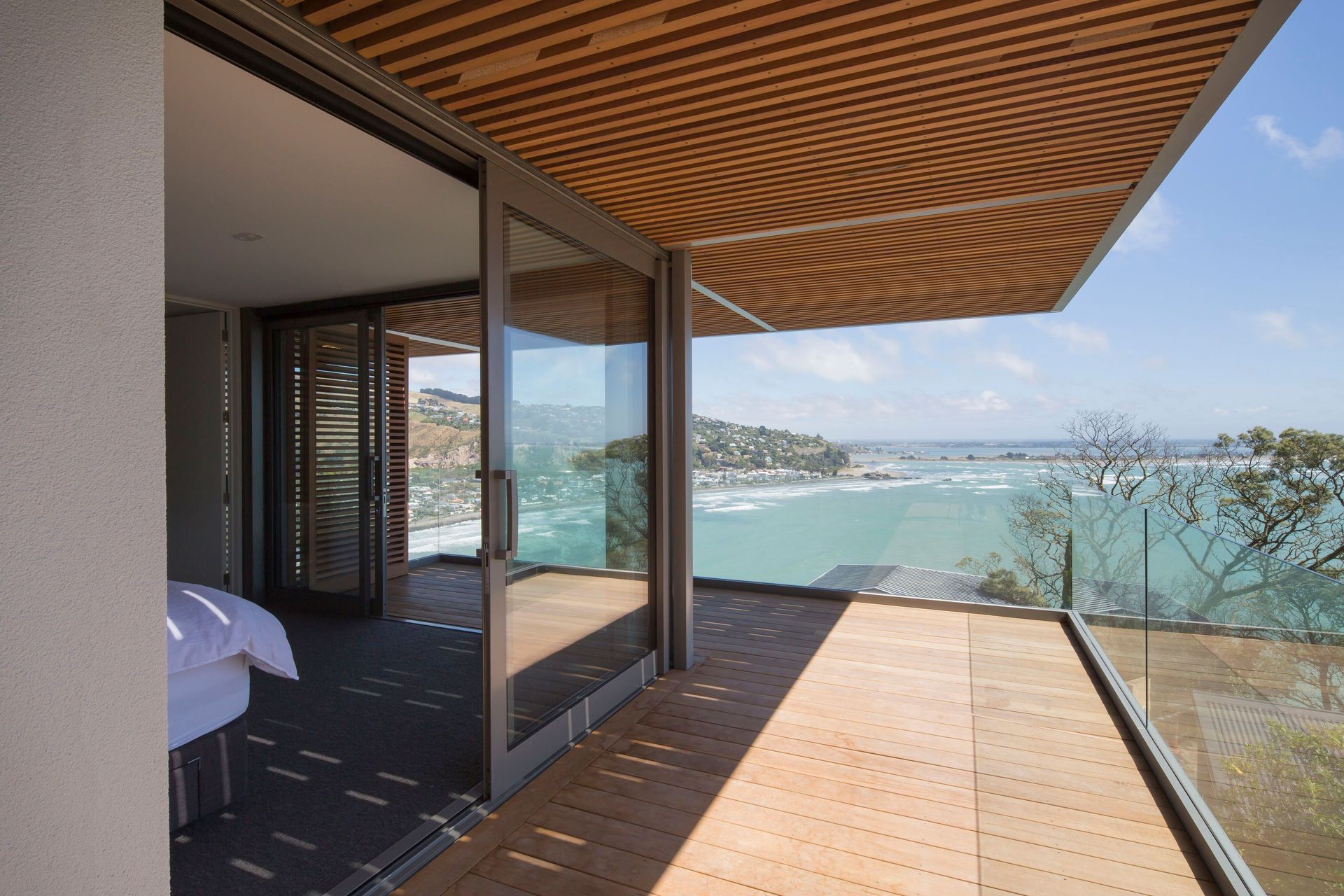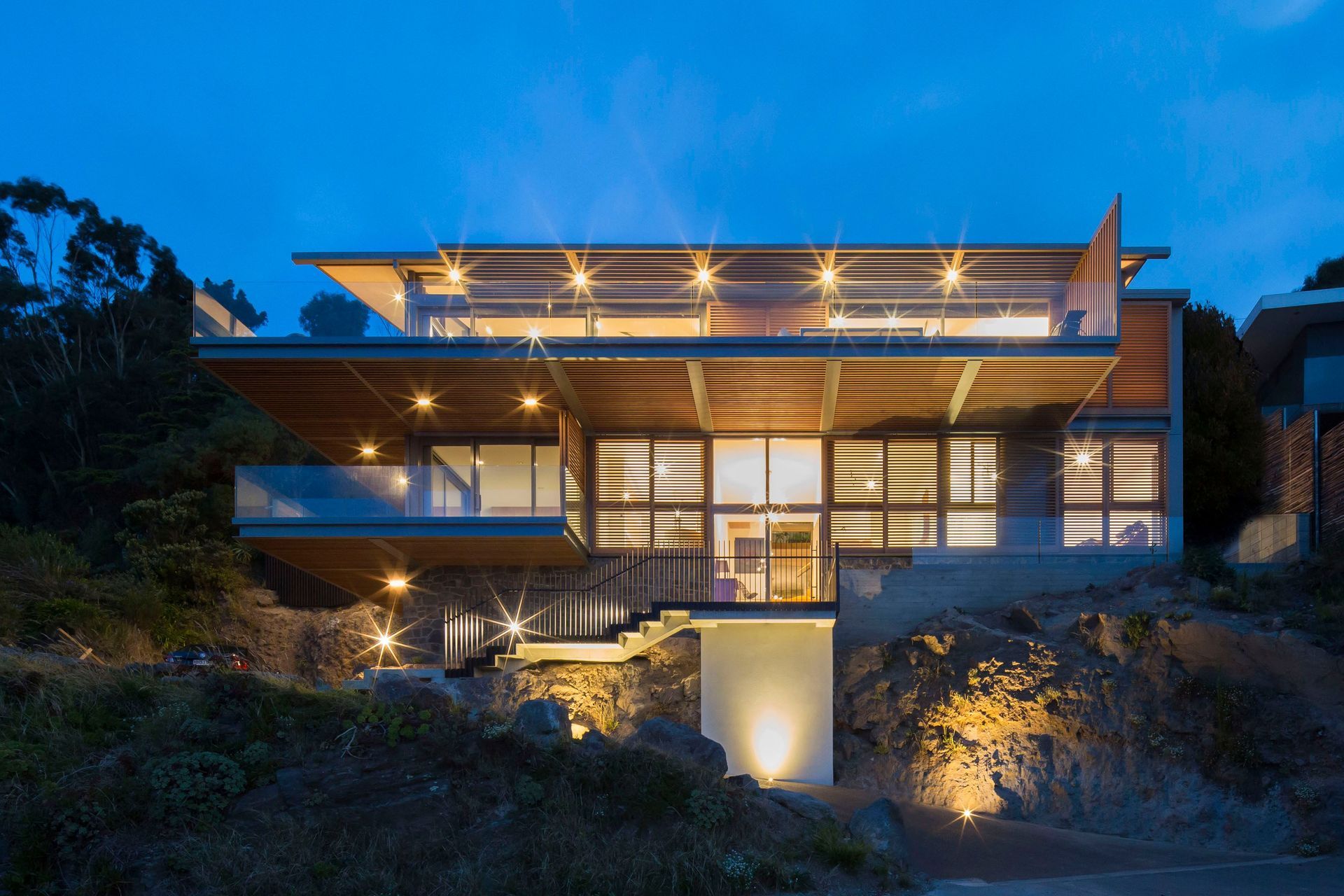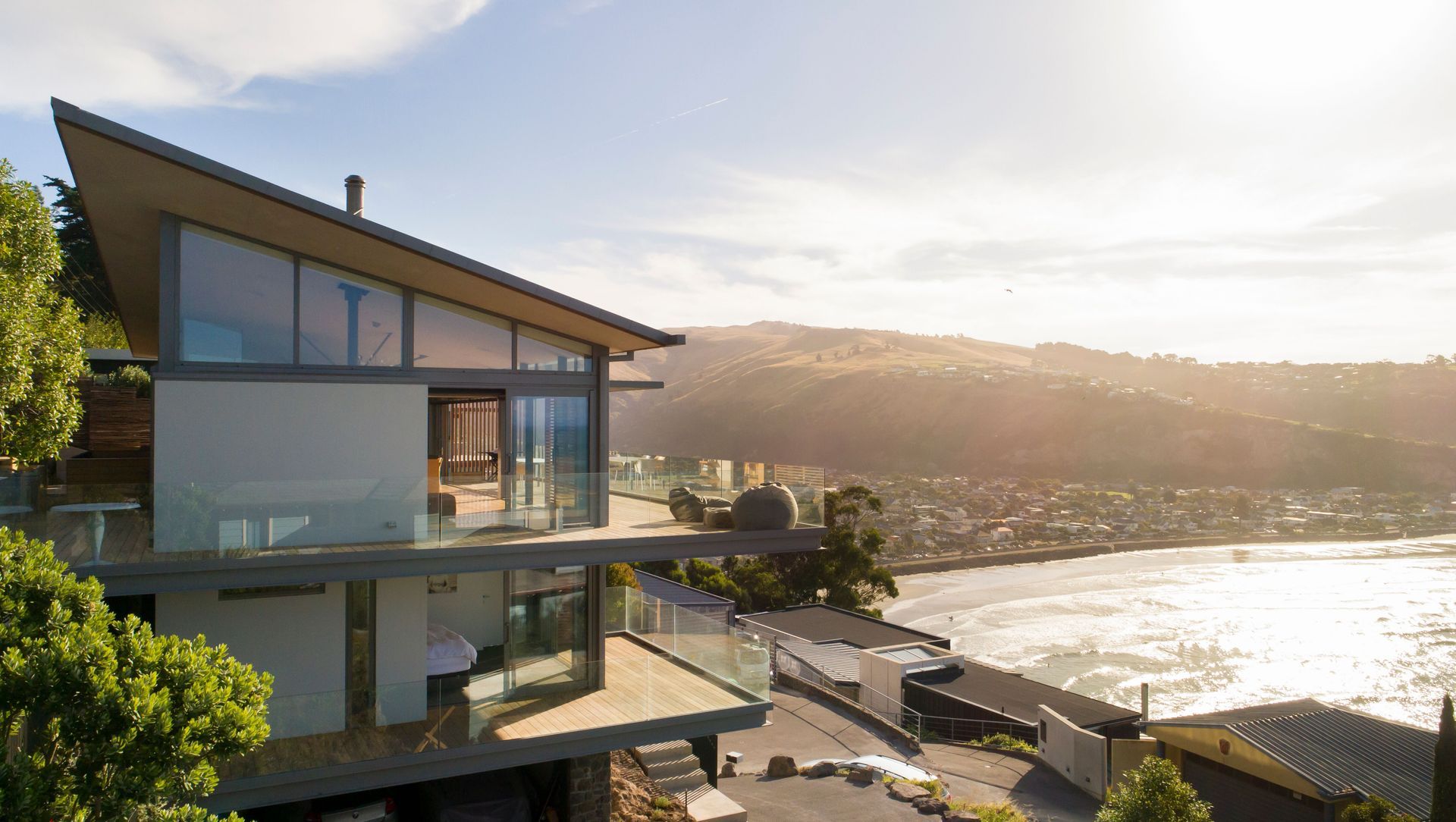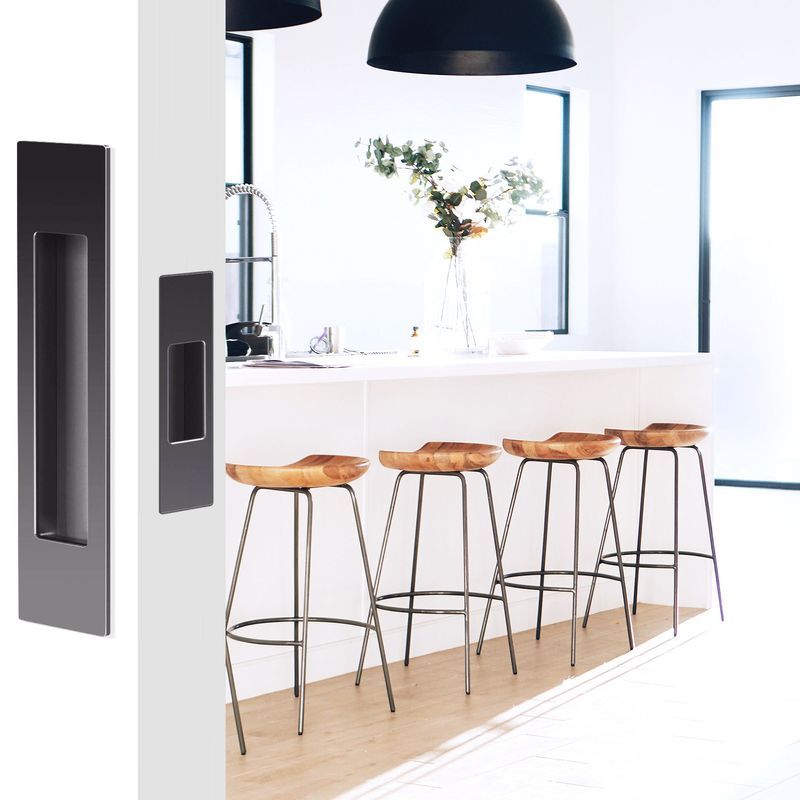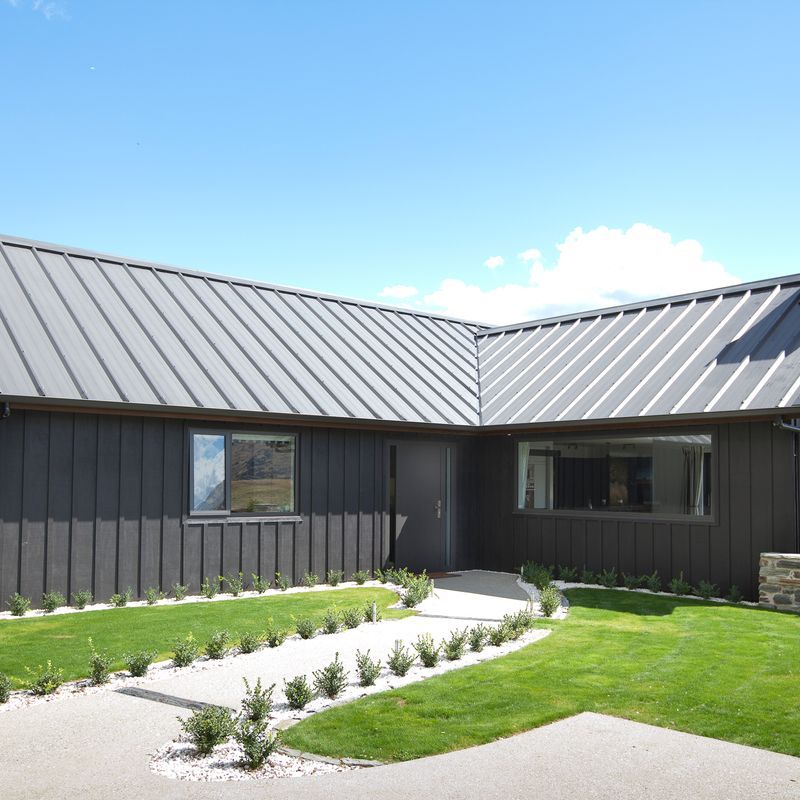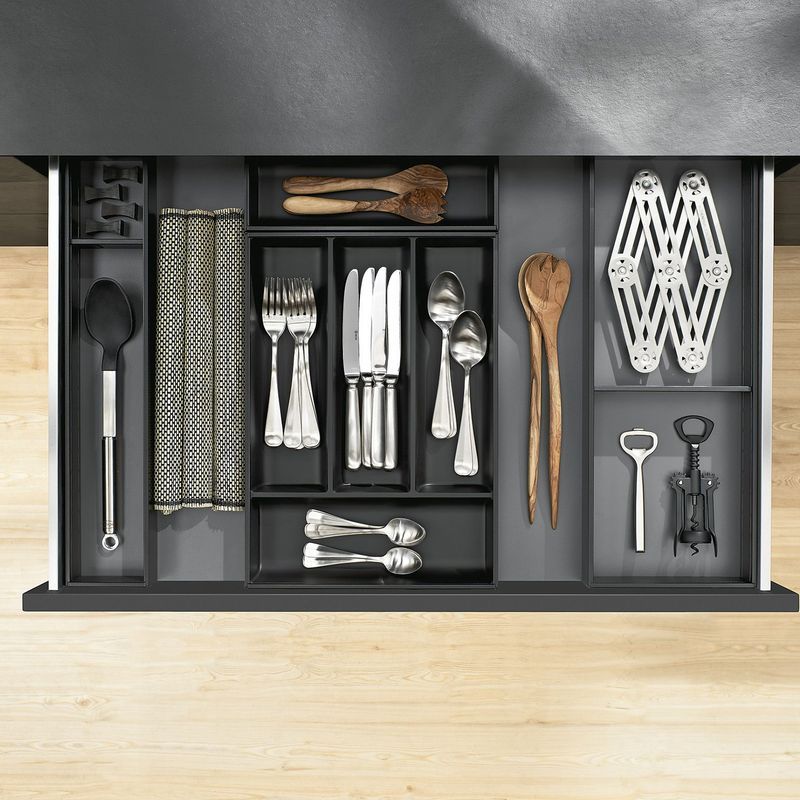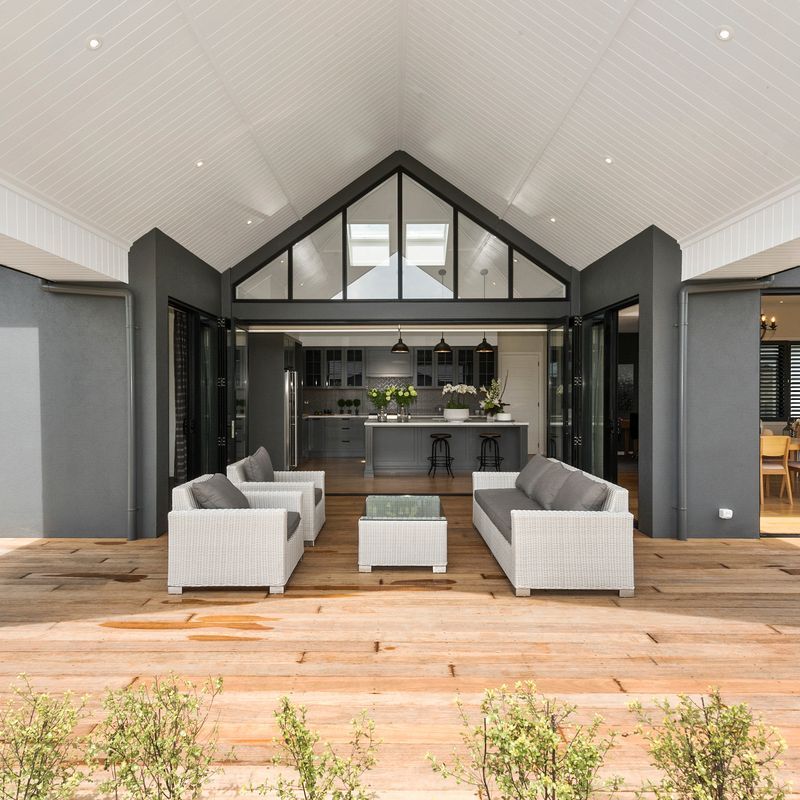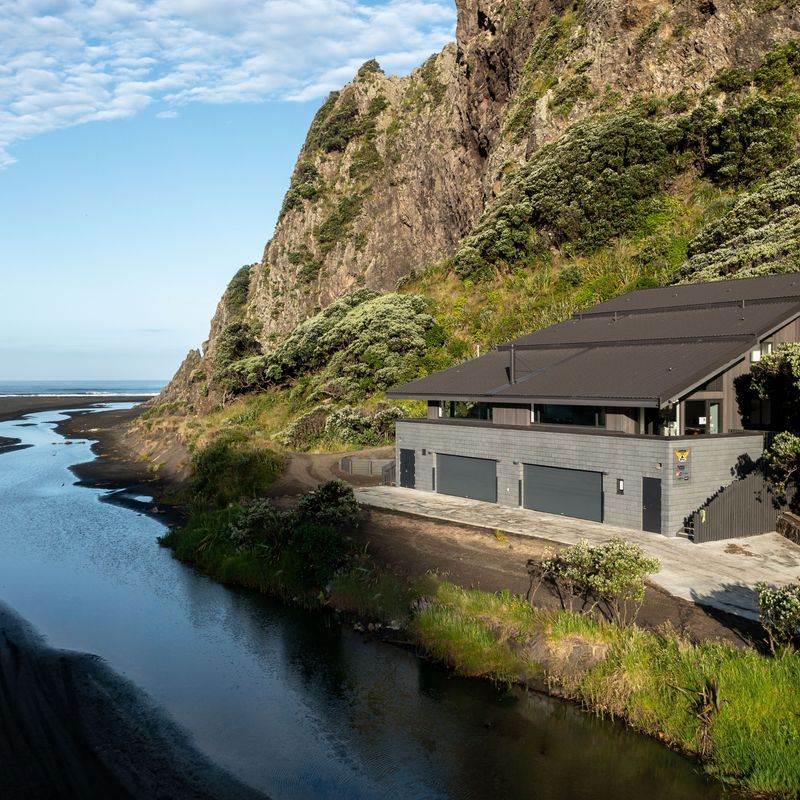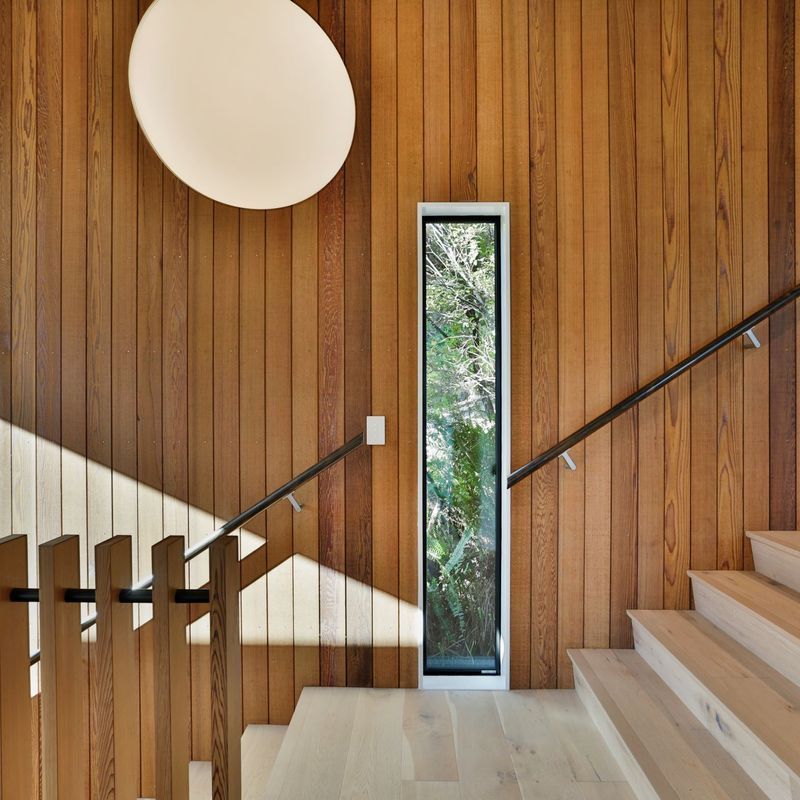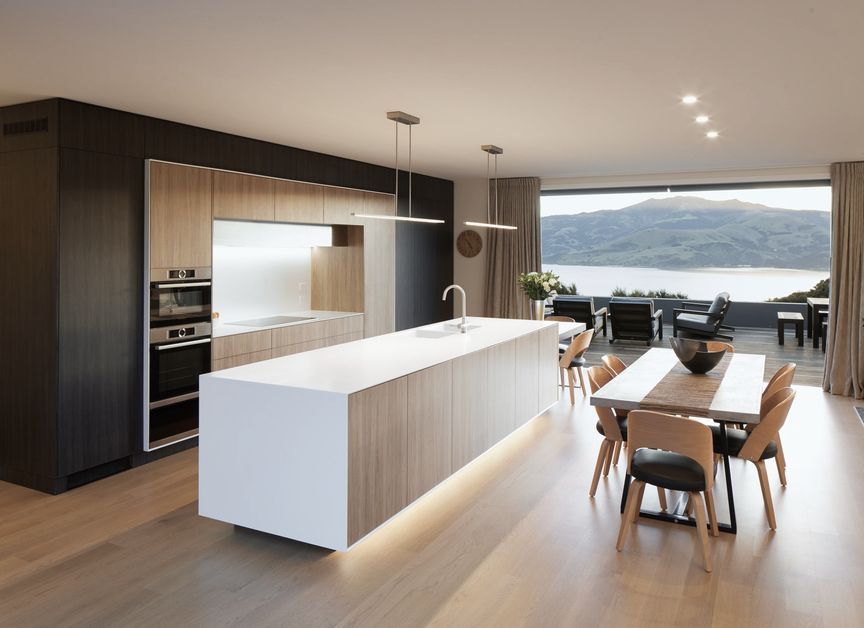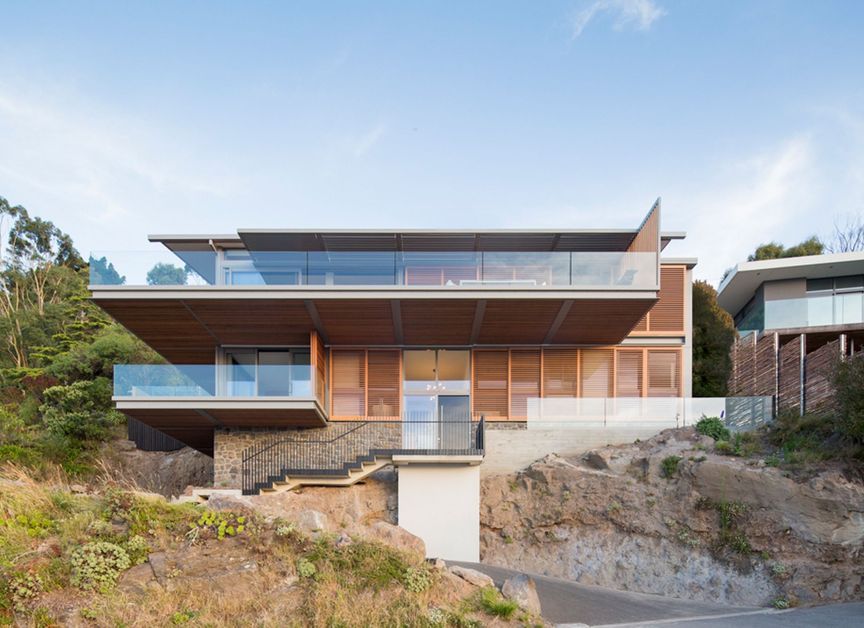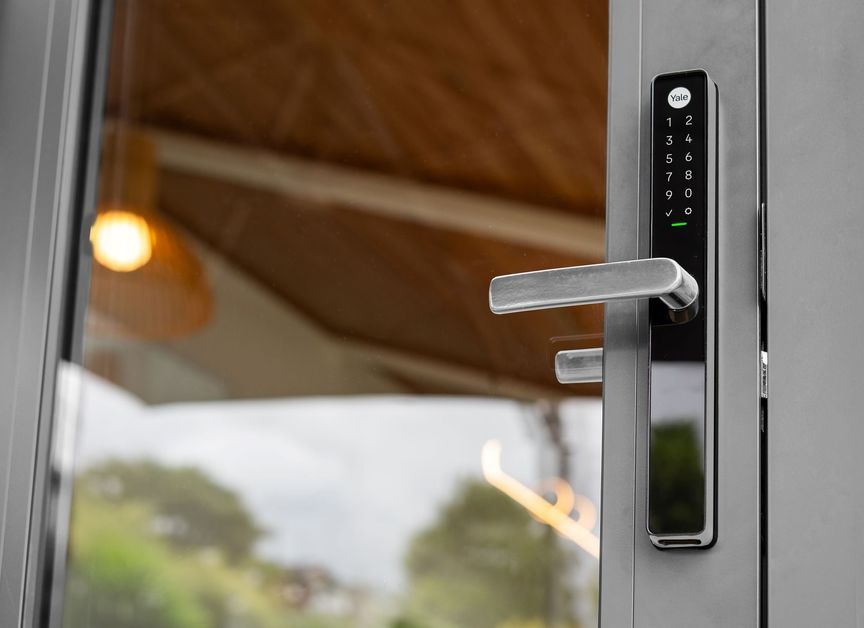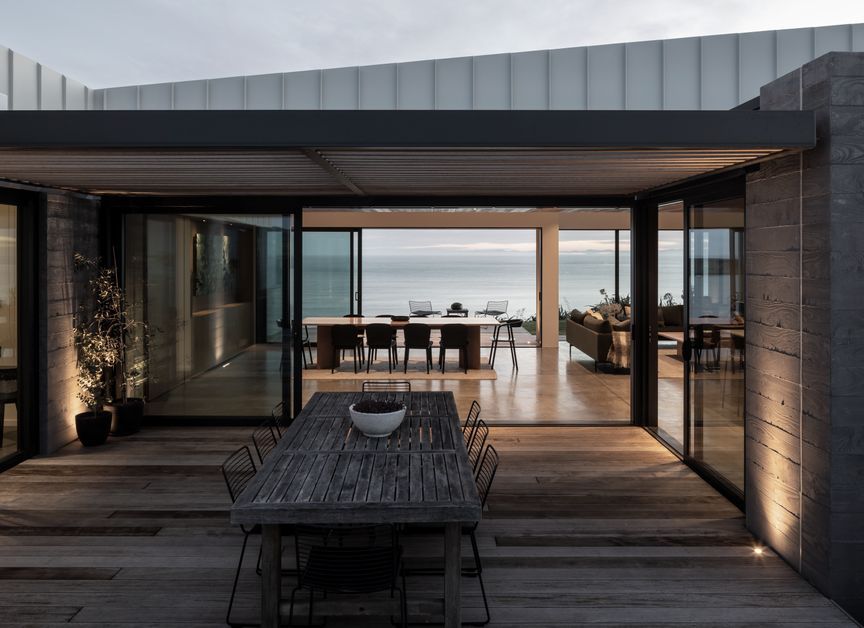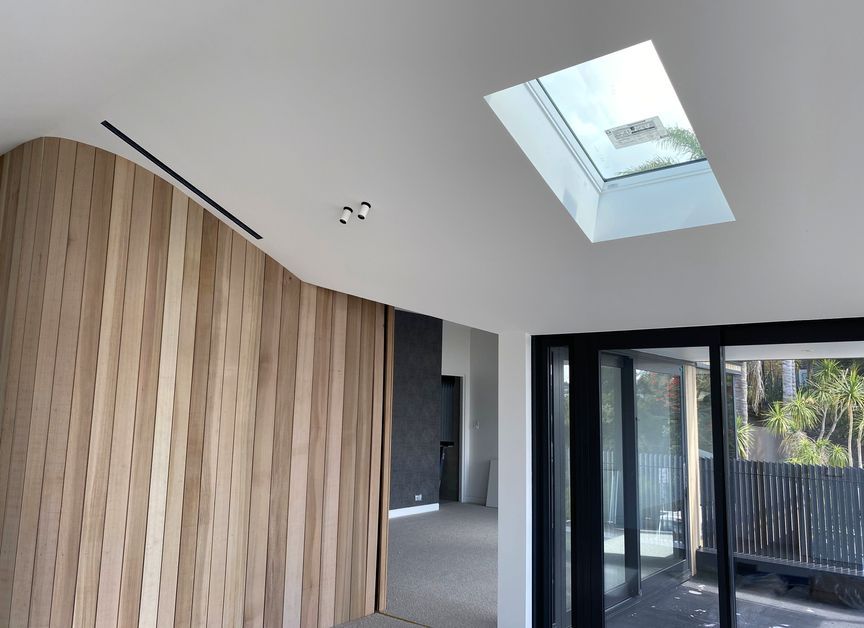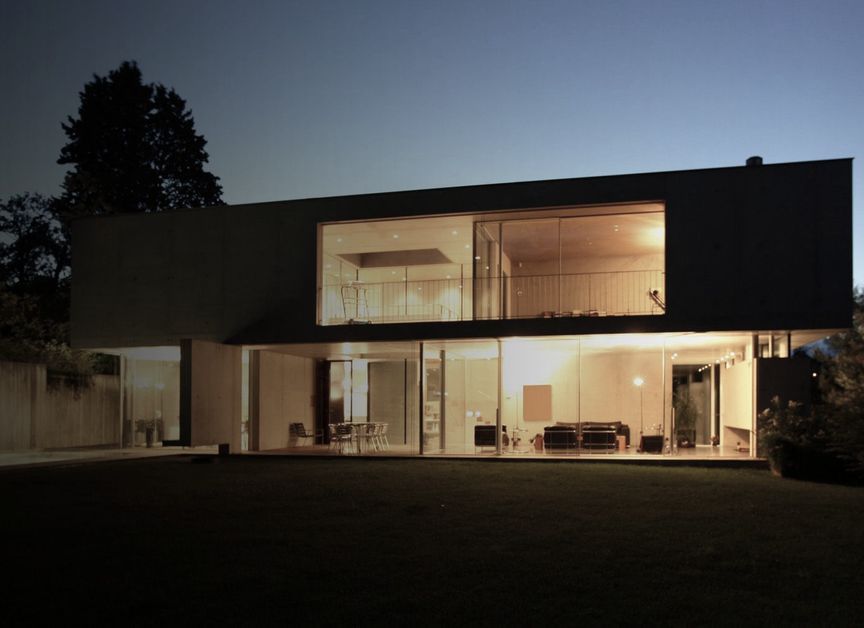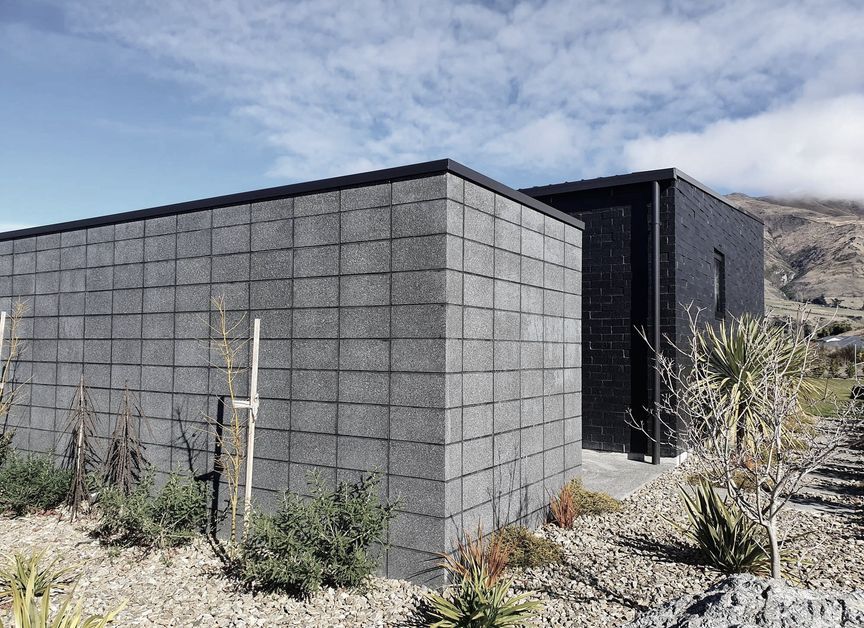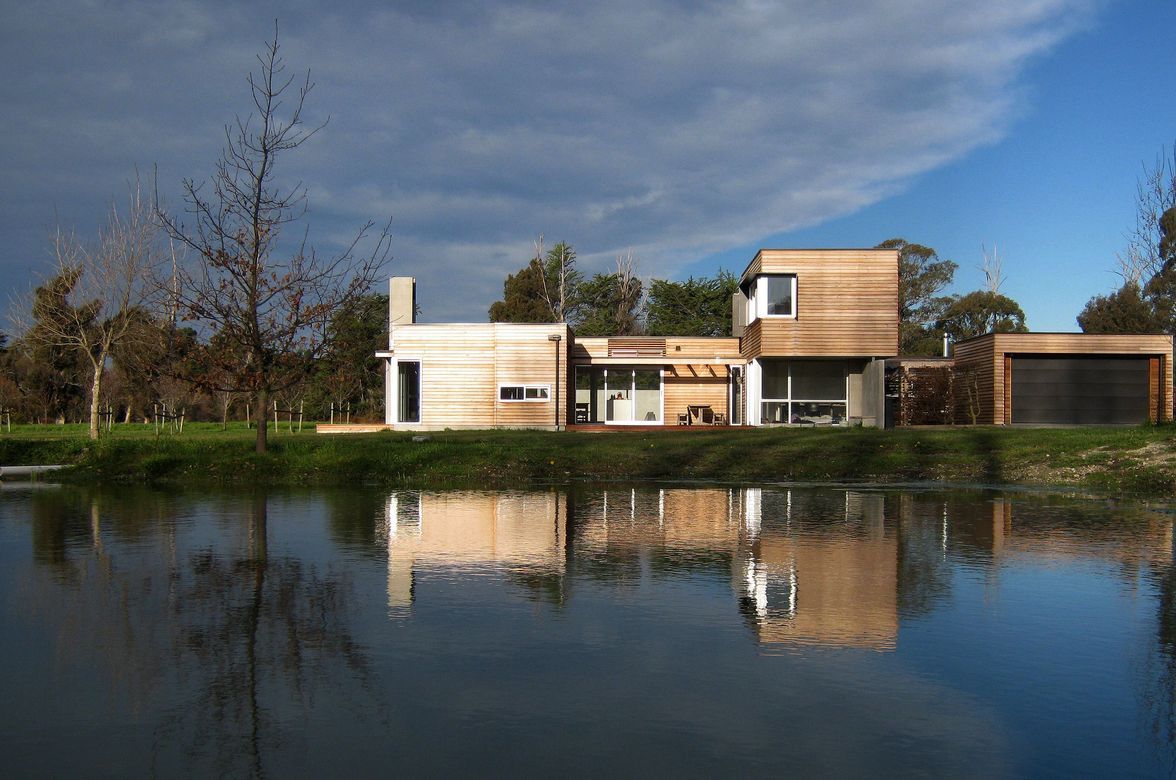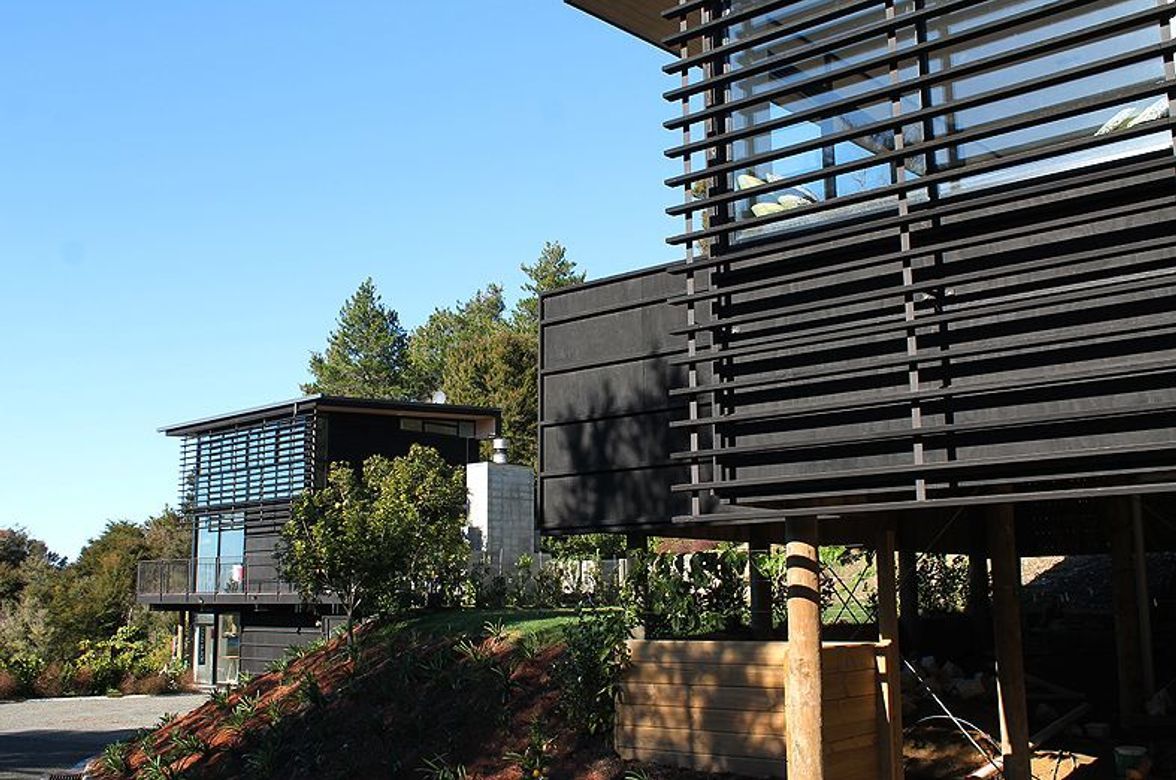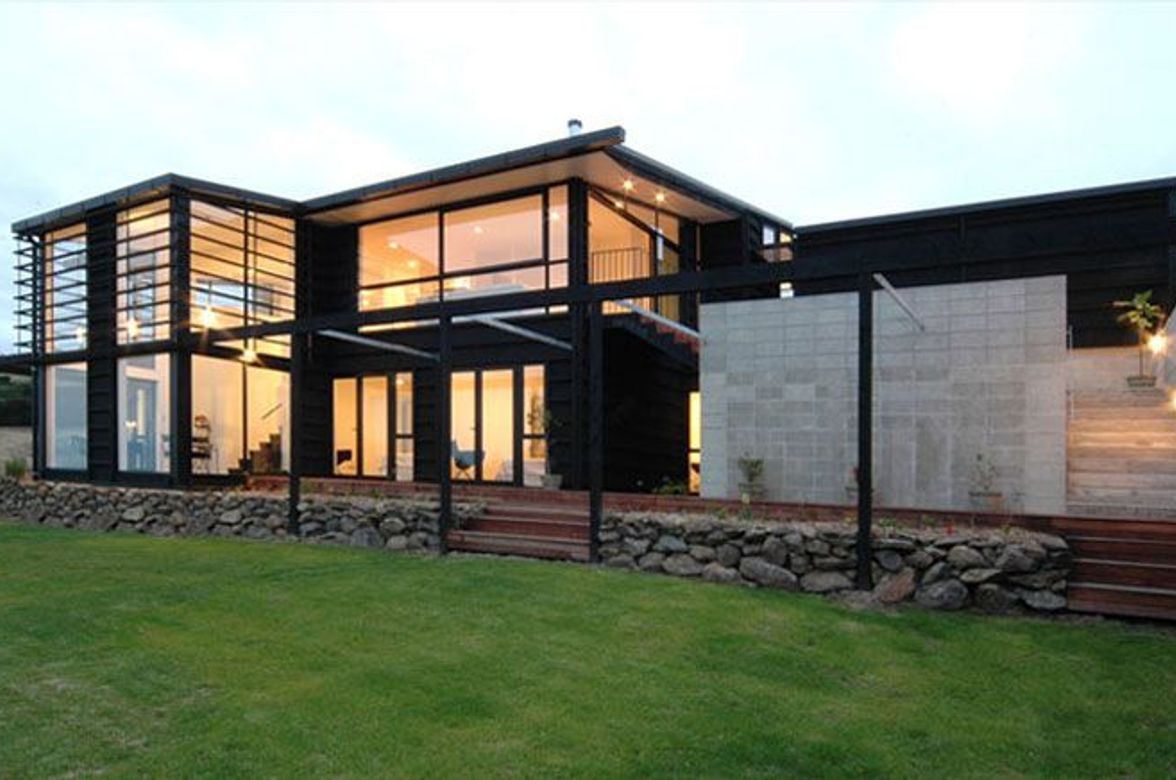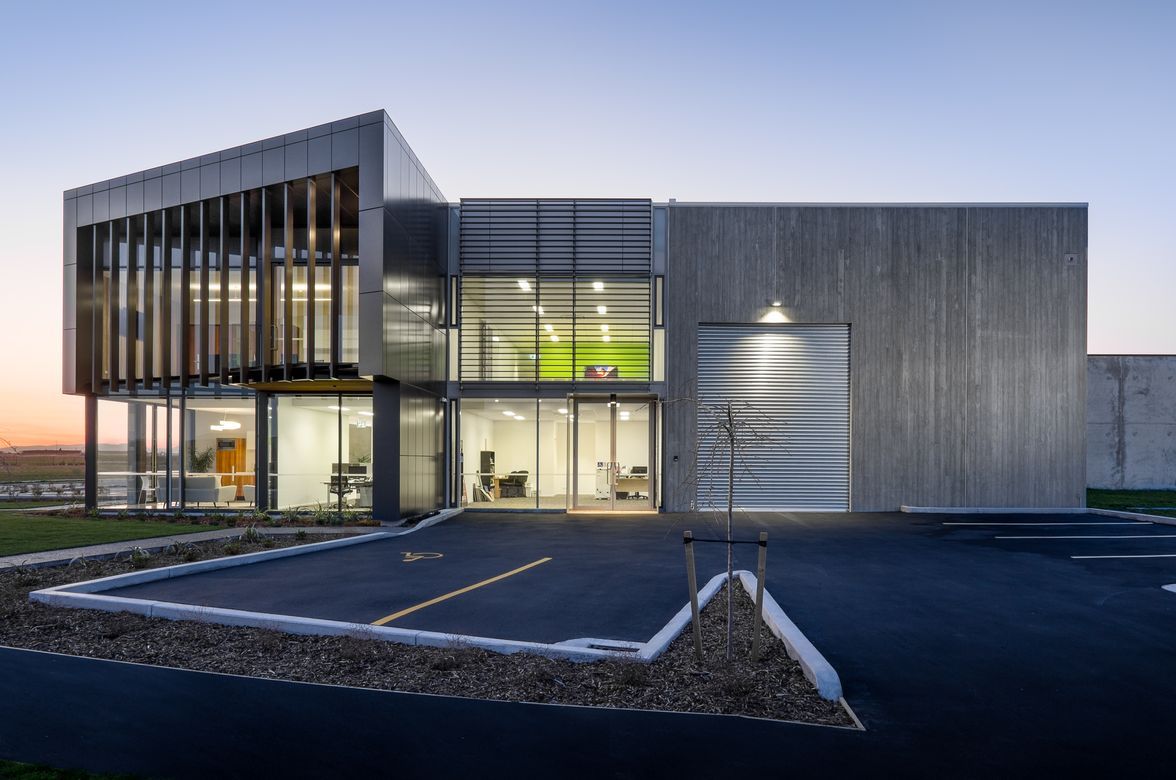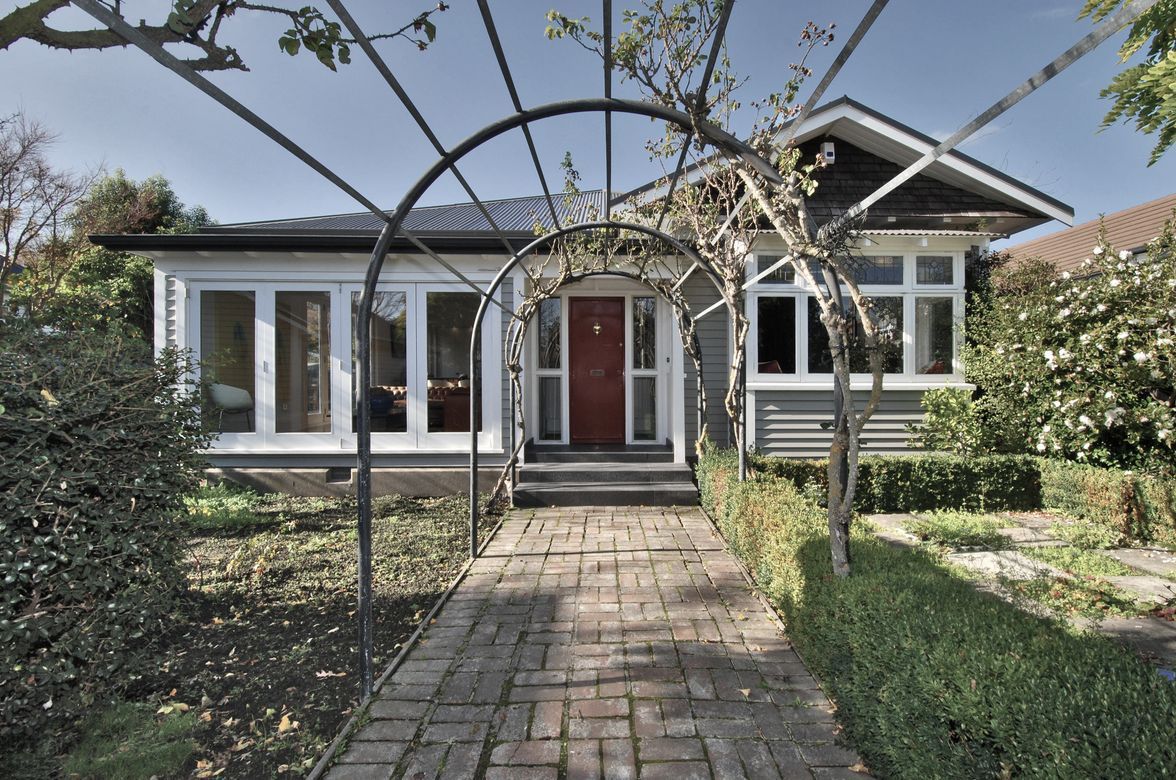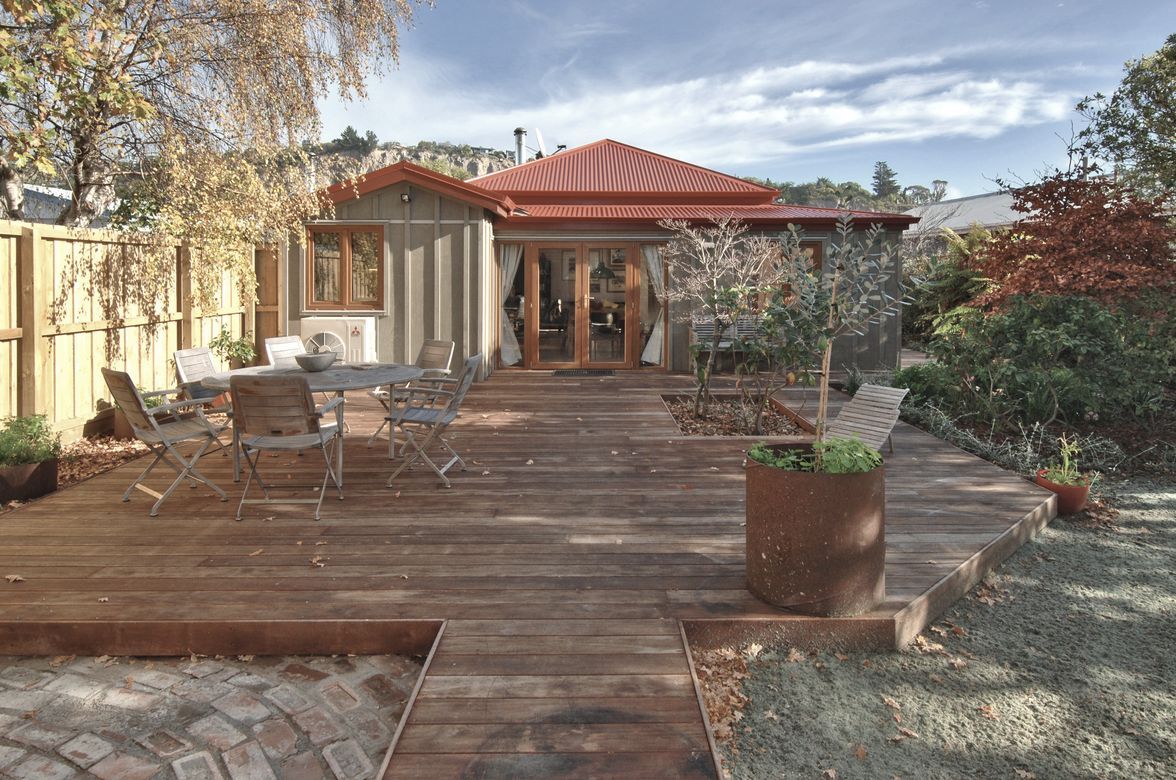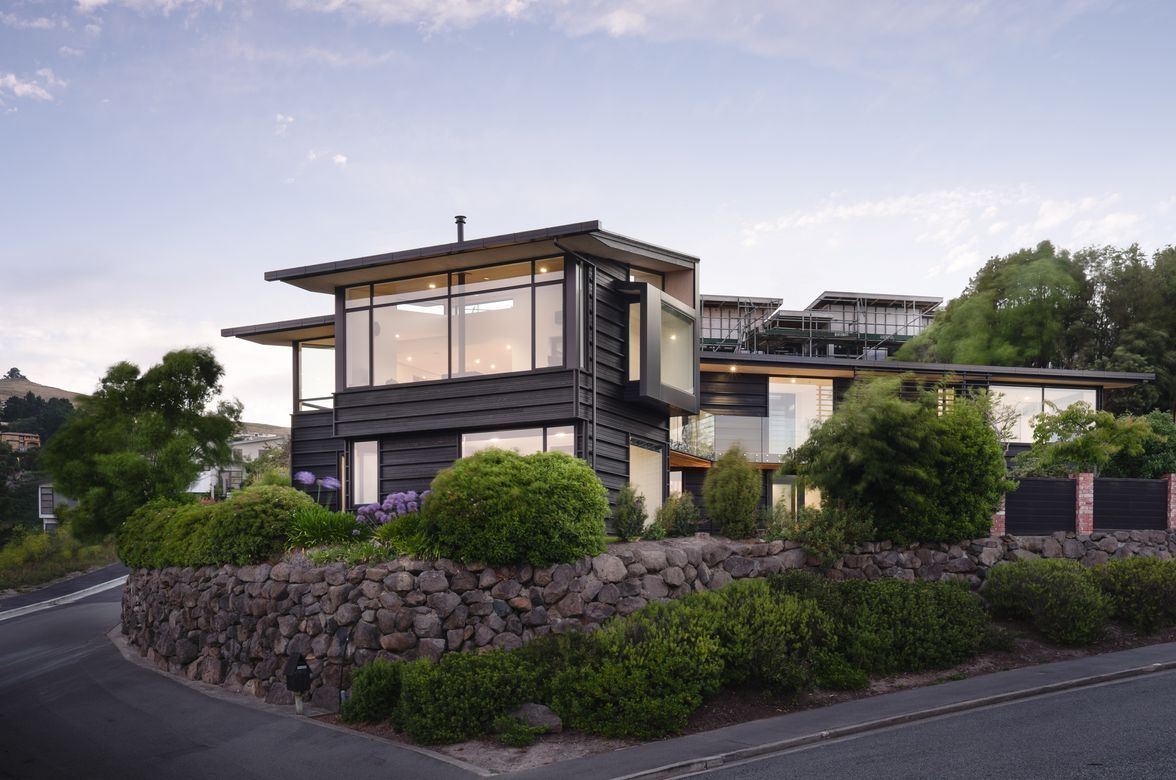A cliff-edge build with extremely difficult access meant that carving out a home on this Scarborough Hill site was an exciting challenge for Borrmeister Architects.
The combination of a difficult cliff-edge site and extremely challenging logistical issues meant that Red Rock House, on Scarborough Hill in Canterbury, was an exercise in tenacity for both client and architect. The small 400m2 site (of which a third is a right-of-way access) is found on the cliff face on a private accessway road, which is hewn from red volcanic rock and teeters above the coastline.
If the location wasn’t already challenging enough for transporting materials to site, the road closures (caused by damage resulting from the Canterbury earthquakes) forced a narrowing of the already tight accessway.
“That made the project very, very difficult, because we couldn’t take any large loads up to the site, so they had to be carried in with small trucks, vans, or trailers,” says Borrmeister Architects’ Wulf Borrmeister.
In addition, for a period of three months during construction, the access road was closed for repairs between 9am and 4:30pm. In short, the project couldn’t have been more challenging, logistically.
Thankfully, the brief for the home was straightforward: the clients had sold their earthquake-damaged house in Sumner village and wanted to downsize to a home that was relaxed, captured the sea views and felt like a holiday at home.
Additionally, they had some environmentally conscious aspirations: the design was to include solar panels, water retention tanks, overhead louvres and an ultra-low emission log burner.
In keeping with their self-sustainability goals, Wulf tried to keep the materials as sustainable as possible, including using a substantial amount of the stone excavated on site for the external cladding on the basement level.
Due to the steep nature of the site, the house was designed across three levels: the basement contains the garage and storage; the ground floor houses the bedrooms and a sauna (that was recycled from their previous home); and the upper level consists of an open-plan kitchen, dining, lounge, powder room, snug and small study nook.
“The original thought was to have the living, dining and kitchen on the ground floor, but it was decided that it would be more beneficial to swap the living and bedrooms, because of the views.”
The uninterrupted views from the top floor to the north and down to the south (which clear the neighbour’s roofline), take in the ocean, beach and Port Hills. The living spaces receive all-day sun, yet Wulf says it was crucial to control the solar gain across the day.
Therefore, a lightweight warped roof—referencing the sail on a mast—follows the path of the sun and enables the living space to catch the morning light as early as possible, while controlling the amount of solar gain in the afternoon.
The shape also captures the views uphill to the council reserve behind the house. “The roof kicks up so that, when seated, you have a clear sightline to the trees on one side, while also retaining a view down to the beach on the other.”
Yet, while the upper floors were designed to capture the views and the sun, cedar sliding screens and automatic overhead louvres were put in place for sun control and to provide natural cross ventilation, without losing the connection between indoor and outdoor environments.
Consequently, a journey from the entrance to the upper level takes in the red volcanic rock of the cliff through a glass-encased, semi-cantilevered timber stair. “You almost feel like you are walking outside,” says Wulf.
Further enhancing the internal connection with the external environment, is the tree-like internal pillars supporting the warped roof structure with their branch-like trusses.
Other internal finishes reflect the client’s eco-conscious brief: the concrete floor acts as a heat sink for passive solar gain; and the textured walls and natural tiles lend a tactile and organic feel.
Since moving in, the clients have purchased an electric car and are making good use of the solar panels on the roof.
Now, with the road repairs completed, when they make the drive back from Christchurch out to their “holiday at home” they can appreciate their home from afar, carved securely into the cliff face and glowing against the red volcanic rock of Scarborough Hill.
Kitchen Design: Ingrid Geldof Design
Photography by: Sarah Rowlands Photography
Awards:
2020 Architecture MasterPrize (AMP) Winner
2019 NZIA Canterbury Local Housing Architecture Award
2019 NZIA Resene Colour Award
2019 Trends International Design Awards (TIDA) New Zealand Architect New Home of the Year - Winner
2019 Trends International Design Awards (TIDA) International Home of the Year - Winner

